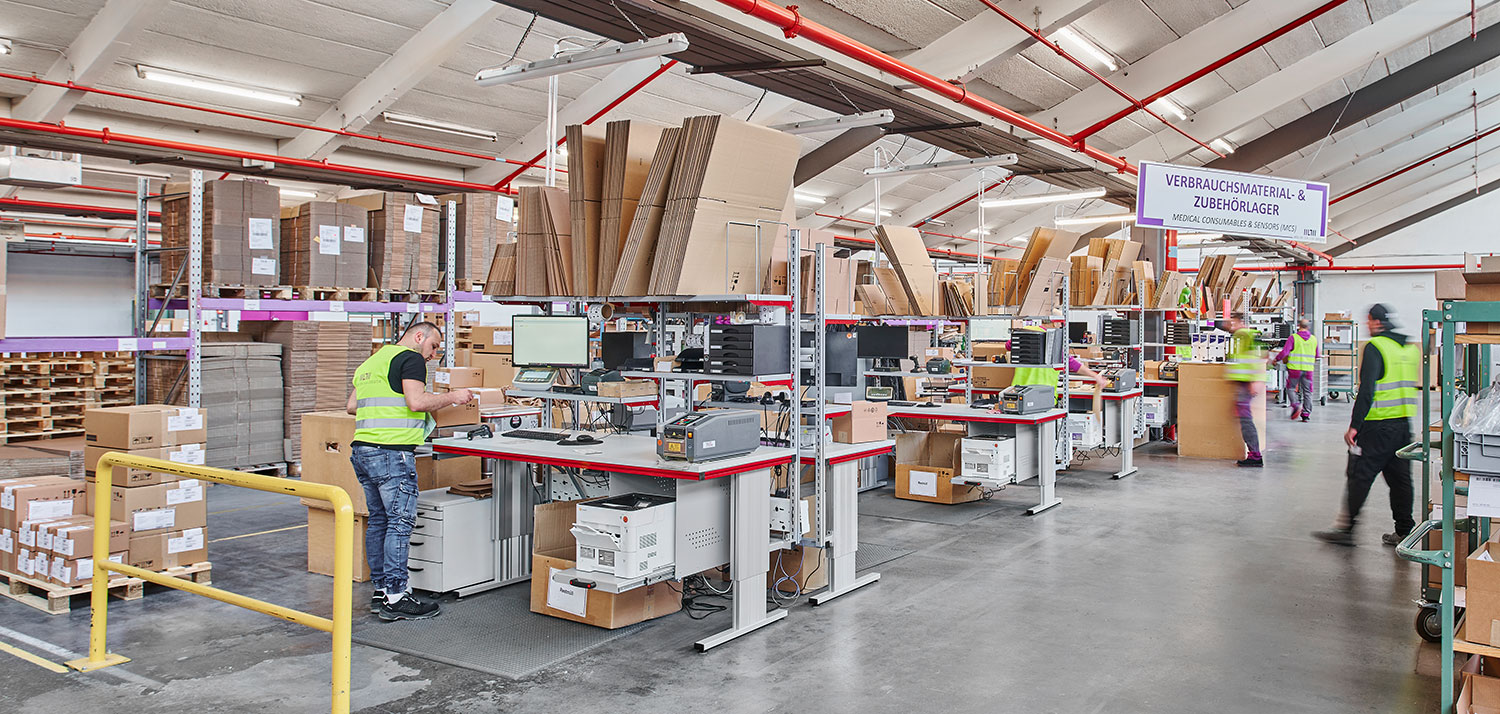
Working ergonomically: what companies should bear in mind!
Info
- Ergonomic working increases productivity and health
- ComputerMyoGraphie enables precise workplace analysis
- Optimal reaching distances reduce strain and errors
- Individual solutions from Rocholz for every business
- Combination of technology, organisation and personal behaviour
- Certified and tried-and-tested workplace systems
Working ergonomically means adapting the workplace to people's needs, thereby ensuring health and performance in everyday working life. A lack of ergonomics in the workplace has a direct impact on companies.
Productivity declines, absences due to illness increase and employee satisfaction suffers. Working ergonomically is not only a matter of responsibility, but also contributes to the future viability of the company. This article explains how companies integrate ergonomic solutions and what advantages this brings.
What does ergonomics mean in the workplace?
Ergonomics deals with the optimal adaptation of working conditions to people. The aim is not only to avoid poor posture, but also to create a working environment that promotes long-term health. The focus is on the interface between humans and machines.
Workplaces are designed to ensure that all processes run smoothly and physical and mental strain is minimised. Ergonomic working encompasses not only furniture and technical aids, but also the organisation of work processes. This creates a working environment that makes it easier for employees to perform their tasks.
The consequences of poor ergonomics in everyday working life
If the workplace is not ergonomically designed, complaints such as back pain, tension and musculoskeletal disorders occur more frequently. In the long term, these can develop into chronic conditions that can permanently limit a person's ability to work.
Absenteeism and an increasing error rate are direct consequences. Companies are faced with rising costs due to absences and declining performance. Employee dissatisfaction is on the rise, which in turn increases staff turnover. Ergonomic working is therefore a measure that not only improves health but also increases operational efficiency.
Ergonomics goes beyond sitting posture
Working ergonomically means more than just sitting upright. In addition to posture, factors such as noise, light, indoor climate, monotonous work processes and the use of aids influence well-being. A holistic approach therefore considers all elements of the workplace.
This concept encompasses the optimal placement of materials, pleasant lighting, minimal noise pollution and the avoidance of repetitive movements. Working ergonomically means coordinating all aspects of the working environment and reviewing them regularly.
In summary:
- Ergonomic working takes all factors of the working environment into account.
- Only holistic measures achieve sustainable effects on health and productivity.
ComputerMyoGraphie: Modern ergonomic analysis for healthy workplaces
ComputerMyoGraphie is an innovative method for analysing and optimising work processes. This technology precisely measures muscle and joint strain independently of the fixed workplace. Sensors attached to the body and work equipment create a digital twin that visualises individual strain.
This detailed data collection enables companies to implement targeted measures. Ergonomic working is thus reviewed on the basis of objective data and continuously improved. The use of ComputerMyoGraphie reduces sick leave, increases satisfaction and boosts productivity.
Note: Precise analysis using ComputerMyoGraphie provides companies with an objective basis for effectively planning ergonomic improvements.
The reach space template: working efficiently and healthily
The reach space at the workplace determines ergonomics and efficiency. The reach space template from Rocholz visualises how tools and materials are ideally arranged. It is based on DIN EN ISO 7250 and distinguishes between different reach zones.
The targeted placement of work equipment reduces unnecessary movements and minimises strain. Employees can reach the items they need without detours, which speeds up processes and protects their health. Working ergonomically means making optimal use of the reachable space and thus improving daily work processes.
Technical, organisational and personal measures for ergonomic working
Ergonomic working consists of technical, organisational and personal measures. Technically, height-adjustable workstations, digital assistance systems and ergonomically placed storage compartments provide relief.
In terms of organisation, varied workflows, break management and a clear structure promote efficiency. On a personal level, every employee can contribute to their own health through exercise, conscious posture and participation in training courses. Ergonomic working thus becomes a shared responsibility and is embedded in the entire working day.
Overview of measures:
- Technical solutions support the individual adaptation of the workplace.
- Organisational and personal strategies promote health and motivation in everyday life.
Ergonomic solutions from Rocholz

Rocholz has many years of experience in ergonomic workplace design and has received several innovation awards. The company develops customised digital solutions that are precisely tailored to the requirements of businesses.
Ergonomic working is achieved through modern technology, sound advice and tailor-made customised products. Rocholz supports companies from planning to implementation and shows how workplaces can be designed to be efficient and healthy. Rocholz's expertise stands for well-designed products and partnership-based advice.
Note: Individual consulting and digital solutions support companies in the sustainable implementation of ergonomic workplaces.
Further information on ergonomic workplace solutions and individual advice can be obtained directly from Rocholz.
